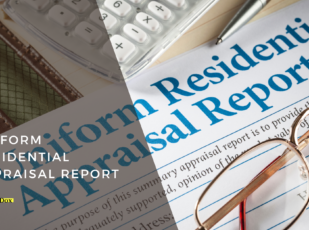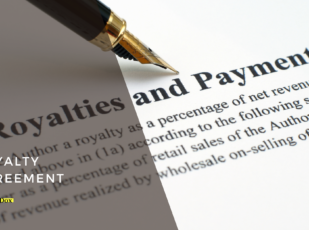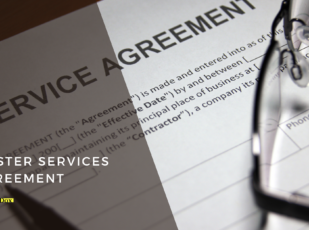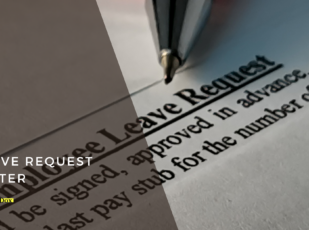
Purchase Order Template
8 Downloads
Money and Finances
December 19, 2024
Sayantani Dutta
There’s more to business than serving the retail market.
The B2B economy relies on supply chains and procurement teams to keep commerce moving. Doing business at a B2B level isn’t as simple as doing a search online for a product or service and picking up the phone to order what you need.
The procurement process in business is a complex animal. There’s a difference in the procurement processes used by a mining supply company with hundreds of employees and a home bakery employing a few key staff.
Still, both the bakery and the mining company can benefit from adding the purchase order into the procurement process.
What is a Purchase Order?
The purchase order is a procurement and inventory management tool used by small and large firms in supply chain transactions. Company X might need to order inventory from Supplier A on the vendor list. The firm issues the vendor with a purchase order for the inventory they need, and the supplier receives and fills the order before invoicing it.
The PO helps procurement departments track spending, enabling tighter budget controls for companies looking to improve profit margins and inventory management processes. The purchase order lays out the terms of the deal in writing before the supplier fulfills the order. This prevents misunderstandings in the dealings between vendors and buyers, for example.
Let’s say you order 100 tons of sand from a supplier, and they deliver 200 tons. Someone has to pay for the mistake. The purchase order prevents these scenarios and keeps the supply chain and procurement process efficient.
POs help procurement and financial departments track spending and manage cash flow. They help company accountants track budgets so that the company has no financial shortfalls caused by improper procurement practices.
For instance, can you imagine the horror of discovering you overspent on procurement this month, and now you don’t have the money to pay your contractors?
The purchase order safeguards spending and adds another layer of transparency to order management and the procurement process. It benefits both the buyer and the vendor, laying the groundwork for a smooth, productive, and valuable business relationship primed for growth.
Who Is Responsible for Generating the Purchase Order?
In small businesses, the company administrator will usually draft the purchase order. In large firms, a procurement team is responsible for preparing and tracking the purchase order and order progress through the supply chain.
Both small and large businesses will typically rely on some form of CRM system for managing business operations. The purchase order template will be a part of the company’s standard procedure paperwork used in the procurement process. Templates are customizable for each transaction and white-labeled to allow the firm to place its company logo and brand identity on the document to give it an official appearance.
Small companies may manually complete purchase orders, but larger firms will automate large parts of the procurement process, including the generation and distribution of POs. The CRM has automated workflows and apps that generate and issue POs to streamline the procurement process. After the system generates the PO, the requestor approves it, and the system sends it to the supplier for fulfillment.
Key Differences Between the Purchase Orders and Invoice
A purchase order is a purchase request from a buyer to a supplier, typically on the company’s approved vendor list. It’s a formal document and is used in every transaction with the buyer initiating the order through the PO. We’ll go through the basic order format of the document in a moment, but first, you’re probably wondering what the difference is between the purchase order and the invoice.
The purchase order is a buyer-side document, while the invoice is a supplier-side document. The purchase order features commodities, products, or services the buyer wishes to purchase from the vendor, and the vendor will invoice the supplier based on the order format and information in the PO and the prior negotiated transaction terms with the buyer.
POs are a key component of the procurement process and supply chain. The procurement team uses the PO number to track incoming inventory, handle order fulfillment, and process supplier payments.
The Importance of a Purchase Order for Business
Many businesses rely on credit accounts with their suppliers to help them deal with cash flow issues in their creditor’s departments. It’s accepted practice in small and large businesses to open supplier accounts and negotiate terms when founding the supplier relationship.
When the two companies begin doing business, the PO initiates the transaction between the companies. Its primary purpose in the procurement process is to order products, commodities, or services and set up the terms of the transaction.
For instance, the PO mentions the shipping terms and the expected delivery date. It will also list the amount due and the payment terms.
The planned purchase order helps companies track their procurement efficiently, reducing bottlenecks in the supply chain and optimizing operations.
A properly managed procurement system can leverage POs to tell you what the department ordered, shipped, and received. Optimizing procurement with purchase orders allows warehouse managers and procurement teams to optimize inventory holdings, ensuring they don’t overstock or understock an item.
The result is an improvement in operational efficiencies and budgets, and that shows up as better profit margins in the balance sheet for the owners and shareholders at the end of the fiscal year.
Buyers use online invoicing software to send POs to vendors using pre-designed purchase order templates. Download a PO template from FreshDox, edit it, brand it to your company requirements, and upload it to your procurement CRM for electronic distribution or printing.
It’s important to note that while a company might be the vendor in one transaction, it might be a buyer in another. Every supplier has suppliers of their own, and they’ll also use a purchase order system when placing orders from the supplier networks.
The PO is a valuable tool in procurement. It acts as a medium of transparency in the procurement chain to avoid discrepancies in transactions between buyers and vendors, keeping the wheels of global commerce turning.
What Does a Purchase Order Include?
The PO contains basic information about the buyer and the details of the transaction with the vendor/supplier. The buyer executes the PO, so it’s printed or drafted on their letterhead or stationary by their systems. It also features the name of the requester of the requisition and approver. The buyer information on the PO includes the company name and contact information, such as the office phone number.
Every PO has a unique purchase order generated by the buyer so they can track the order through their independent procurement system. The PO itself will list the order details, such as the item and item numbers or SKU codes. It will note the unit price and subtotal and due date for payment, along with the shipping terms and the buyer’s shipping information.
The PO will mention the same general contact information of the vendor and details like the order date and expected delivery date. If there are any additional terms like discounts, they’ll be mentioned in the PO.
Standing Purchase Order Vs. Blanket Purchase Order
While we’ve discussed everything you need to know about the PO, there are different types of purchase orders for different transactions. The standing purchase order is a form of contract purchase order used in the acquisition of services or commodities needed on an ongoing basis.
The items, quantity, pricing, and frequency of delivery are predetermined and negotiated in advance. The standing PO generally isn’t used for purchasing capital equipment or machinery, and these contracts have a maximum duration of a year, usually expiring at the end of the company’s fiscal year.
The blanket purchase order is also used in the procurement of commodities or services from a vendor for departments that have varied but predictable program needs. The range of items covered by the blanket purchase order is defined narrowly and isn’t used for the procurement of items like appliances or equipment. Like the standard PO, the blanket PO has a one-year validity date and expires within the fiscal year it was initiated.
How Are Purchase Orders and Invoices Similar?
The PO and invoice might be completely different documents for different purposes, but they do have a few similarities. Both documents are part of the procurement process and are legally binding between the parties involved in the transaction.
Both the invoice and the PO show an agreement between the buyer and vendor/supplier, as well as the key details of the transaction, such as the mailing addresses and rates. Each PO and invoice also receives a unique number for accurate tracking in the procurement process.
Download a Free Purchase Order Template with a Free Trial of FreshDox.com
Don’t waste your time trying to build a purchase order form template on Google Sheets. Sign up for a free 7-day trial of a Basic or Premium account with FreshDox and get access to a customizable, printable template for your purchase order process. Our documents are easy to edit in seconds and available to download in PDF or Microsoft Word formats. Check out our library with your free trial of our platform. Looking for an invoice template or a purchase agreement? We have them waiting for you at FreshDox.
Related Templates
Discover more templates that align with your needs and preferences.

Ready to Sign Up?
Sign up for FreshDox.com’s 7-day trial and discover why so many individuals and businesses trust us for their legal document template needs.
- Cancel any time
- 7-day free trial
- From 300+ Customer Reviews
















